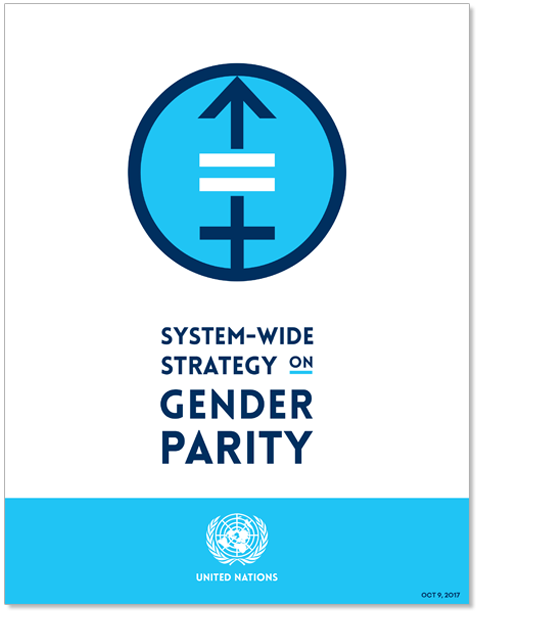Strategy
Vision
In his oath of office, the Secretary-General made clear that achieving gender parity was a top priority:
Management reform must ensure we reach gender parity sooner rather than later. The initial target for the equal representation of women and men among United Nations staff was the year 2000. Sixteen years later, we are far from that goal. I pledge to respect gender parity from the start in all my appointments to the Senior Management Group and the Chief Executives Board.
By the end of my mandate, we should reach full gender parity at the Under-Secretary-General and Assistant Secretary-General levels, including special representatives and special envoys. We need a clear road map with benchmarks and time frames to achieve parity across the system, well before the target year of 2030.
This objective not only reflects the Organization’s core values and a commitment that is decades old, but is essential to strengthening the work of the UN. The system-wide strategy on gender parity is a milestone in this journey. It operationalizes the goal of gender parity, moving the UN from ambition to action.
Gender Parity Task Force
In January 2017, a Gender Parity Task Force was established to come up with a clear roadmap, with benchmarks and timeframes, to achieve parity across the system. The Task Force, consisting of staff from more than 30 entities, divided into subgroups focusing on:
- Data / setting targets / establishing common definitions of what is being measured / accountability
- Special measures
- Senior Appointments
- Mission Settings
- Enabling environment / organizational culture / policies related to work environment
Each group consisted of a lead and members from entities across the UN system. The result of their eight-month effort is a collaborative, inclusive product, developed by the system and for the system, which incorporates good practices from those making strides, and lessons learned from past efforts.
Strategy Information
The System-wide Strategy on Gender Parity balances accountability with incentives, recognises different starting points and challenges, and provides positive tools to empower and encourage staff and managers alike. It includes a target to reach parity at all levels and in all entities by 2028. The goal, however, is not just about hitting the numbers. It is about modernizing the organization and shifting its institutional culture so that the United Nations can access and capitalize on its full potential.
The strategy advises on reinvigorating recruitment and retention efforts, including by proposing temporary special measure to assist and support managers as well as by suggesting the use of modern executive search functions and senior talent inventories. Priority is given to developing staff talent through mentoring opportunities, training programmes, talent management pilot initiatives, and the use of induction processes. The strategy aims to strengthen the organization’s working environment by proposing programmes on eliminating unconscious bias, flexible work arrangements, revised parental leave policies, and improved workplace and accommodation standards in non-family duty stations.
The commitment to achieving system-wide gender parity is underpinned by a strong legislative and institutional framework which has been consistently developed and strengthened since the founding of the United Nations in 1945. Ultimately, the strategy operationalizes this legal framework, taking the imperative of gender parity from ambition to action.
The System-wide Strategy on Gender Parity is available in English, Arabic, Chinese, French, Russian, and Spanish.
Progress to Date
Since 2017, there has been progress in attaining gender parity across the UN system. Parity was reached among the Senior Management Group and Resident Coordinators in 2019, and amongst full-time Under- and Assistant-Secretaries General in [year]. Moreover, the representation of women at headquarters locations reached parity for the first time in 2023. In 2021, the organization reached the highest number of women as of heads of missions and deputy heads in peace operations in its history.
Overall, the representation of women has significantly increased since the Strategy was introduced. The number of United Nations entities that had reached gender parity increased from 5 in 2017 to 27 in 2023. The system-wide network of UN Gender Focal Points, led and coordinated by UN Women, has expanded significantly.


